In a world where economic ups and downs can feel like a roller coaster ride, a robust economy stands out like a shiny unicorn at a petting zoo. It’s not just a buzzword tossed around in boardrooms; it’s the backbone of stability and growth. Imagine a place where businesses thrive, jobs are plentiful, and your coffee shop doesn’t have to close early because of a slow Tuesday. Sounds dreamy, right?
A robust economy doesn’t just benefit the big players; it lifts everyone from the local baker to the tech whiz in their basement. When the economy’s strong, wallets get fatter, and spending habits get a little wilder—who wouldn’t want to splurge on that artisanal avocado toast? Dive into the captivating world of economic strength and discover how it shapes lives, communities, and maybe even your next brunch outing.
Table of Contents
ToggleUnderstanding a Robust Economy
A robust economy serves as the backbone for stability and growth within a community. It creates an environment where both individuals and businesses can thrive.
Definition and Key Characteristics
A robust economy features several key characteristics. Strong GDP growth rate reflects consistent economic activity. Low unemployment rates indicate that job opportunities abound. Inflation remains stable, ensuring that purchasing power doesn’t erode. Additionally, diverse business sectors contribute to resilience. When small businesses prosper alongside large corporations, it supports a balanced economic landscape.
Importance of Economic Resilience
Economic resilience plays a crucial role in sustaining a robust economy. Communities facing external shocks—such as natural disasters or financial crises—can withstand disruptions effectively. Enhanced adaptability ensures quick recovery from adverse events. Strong consumer confidence drives spending, further stimulating growth. Stable micro and macroeconomic conditions foster long-term investments, positively influencing overall prosperity. Robust economies can navigate challenges while maintaining a positive quality of life for residents.
Factors Contributing to a Robust Economy

A robust economy relies on several critical factors that work together to promote stability and growth. These elements influence various sectors, from job creation to technological advancements.
Strong Employment Rates
Strong employment rates play a vital role in shaping a robust economy. With a low unemployment rate, individuals secure jobs, boosting household incomes and spending power. Job security enhances consumer confidence, leading to increased expenditures on goods and services. A diverse workforce contributes to a dynamic and adaptable economy. Regions with strong employment often experience growth in sectors like retail and services, fostering vibrant community life.
Efficient Resource Management
Efficient resource management supports sustainable economic growth. Effective allocation of resources minimizes waste and maximizes productivity. Businesses that utilize resources efficiently optimize their operations, enabling them to scale and innovate. A focus on sustainable practices enhances competitiveness, attracting investments. Communities benefit when resources are managed well, promoting environmental health and reducing costs. Smart policies regarding resource usage lead to long-term economic and ecological resilience.
Innovation and Technology Adoption
Innovation and technology adoption drive a robust economy forward. Cutting-edge technologies enhance efficiency across industries, from manufacturing to healthcare. Companies embracing innovation create competitive advantages, leading to increased productivity and job creation. Emerging technologies like artificial intelligence and renewable energy open new market opportunities. Additionally, a culture of innovation fosters collaboration, allowing businesses to adapt swiftly to changing market conditions. With a focus on continuous improvement, economies thrive in an era of rapid change.
Case Studies of Robust Economies
Robust economies demonstrate key traits that foster growth and stability. Numerous case studies illustrate successful implementations of these characteristics around the globe.
Examples from Around the World
Germany exemplifies strength through its diverse industrial base and emphasis on engineering. Strong exports contribute significantly to its GDP, showcasing an effective manufacturing sector. Similarly, Singapore’s strategic location and pro-business policies attract foreign investments, encouraging dynamic economic activity. Canada also stands out, promoting natural resource management and innovation, which support sustainable growth. Collectively, these economies reinforce the notion that diversity and adaptability play vital roles in economic robustness.
Lessons Learned from Successful Economies
Successful economies reveal essential strategies that enhance resilience. Emphasizing education and workforce development strengthens employment rates, leading to increased consumer confidence. Prioritizing innovation domestically fosters competitive advantages and job creation. Additionally, effective governance simplifies business operations and promotes transparency. Ultimately, these lessons underscore the relevance of adaptability in responding to changing market demands, ensuring sustainable economic progress.
Challenges to Maintaining a Robust Economy
Robust economies face various challenges that can impede growth and stability. Understanding these obstacles is crucial for ensuring long-term prosperity.
Economic Fluctuations
Economic fluctuations represent a significant barrier to sustaining a robust economy. These fluctuations manifest as unpredictable changes in demand, production, or employment levels, leading to cyclical downturns. For instance, recessions can arise from various factors, including shifts in consumer confidence or alterations in monetary policy. Businesses often struggle to adapt during these periods, which may result in layoffs and decreased investment. Policymakers play a vital role in implementing measures to stabilize the economy, such as fiscal stimulus or adjustments in interest rates. Effectively managing these fluctuations promotes a healthier economic environment, fostering resilience among businesses and communities.
External Shocks and Global Events
External shocks and global events create additional challenges to maintaining a robust economy. These shocks include natural disasters, pandemics, or geopolitical tensions, all of which can disrupt supply chains and hinder trade. For example, the COVID-19 pandemic dramatically affected economies worldwide, causing widespread unemployment and business closures. Adapting to such shocks requires agility and preparedness from businesses and governments alike. Strategic investment in disaster recovery and robust infrastructure enhances a nation’s ability to withstand these challenges. Addressing external threats is essential for protecting economic stability and ensuring continued growth in an interconnected world.
A robust economy serves as the backbone of thriving communities and successful businesses. Its characteristics contribute to a stable environment where individuals can enjoy improved quality of life. By fostering strong employment rates and encouraging innovation, economies can adapt to challenges and seize opportunities for growth.
The lessons learned from successful economies around the world highlight the importance of strategic policies and effective governance. As nations navigate the complexities of global interdependence, prioritizing resilience and adaptability will be crucial. This commitment not only safeguards against external shocks but also paves the way for sustainable prosperity. In an ever-changing landscape, a robust economy remains essential for nurturing vibrant communities and ensuring long-term success.








